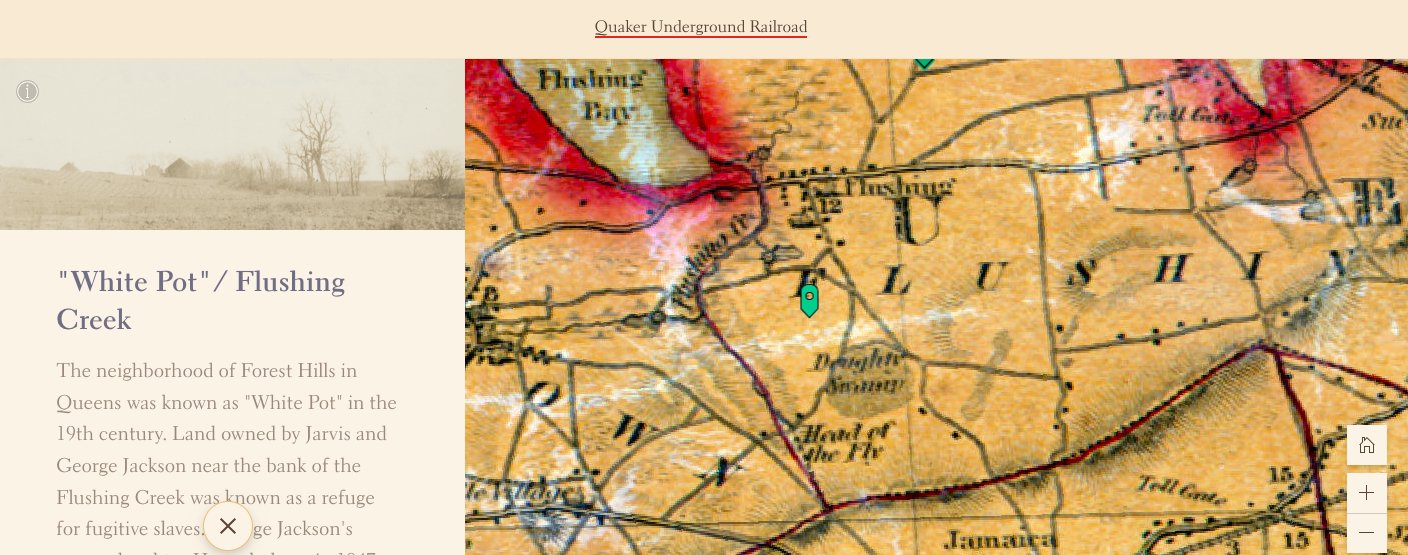BYWAYS TO LIBERTY: THE UNDERGROUND RAILROAD IN FLUSHING AND BEYOND
A STORYMAP FROM THE BOWNE HOUSE HISTORICAL SOCIETY
To round off our observance of Black History Month, the Bowne House Historical Society invites the public to visit our long-awaited StoryMaps project "Byways to Liberty”:
The interactive, multimedia StoryMaps platform allows users to explore the place of Bowne House and the Flushing community in the Underground Railroad. Through narrative, photographs and artwork, contemporary and historic maps, original documents, and more, we trace networks of Quaker homes and Meeting Houses, free black communities and churches, and metropolitan abolitionists associated with the New York Vigilance Committee.Following its construction in 1661, Bowne House was home to multiple generations of a family that came to include abolitionists, Underground Railroad operatives, and founders of Black schools. Over the course of its 350-year history, it also housed a number of African-American residents, both enslaved and free. Today, Bowne House belongs to the National Park Service’s Network to Freedom, which highlights historic sites and cultural institutions with documented ties to the Underground Railroad; it is currently the only location in the Borough of Queens to be so recognized. Today, we seek to place the site in a larger context and deepen our understanding of the journeys undertaken by the freedom-seekers who passed through Flushing and of the free African-American community active in Flushing at that time.
In the words of Bowne House Archivist Charlotte Jackson, "This project began with a seemingly simple question: how did a freedom seeker get to Flushing? And where did he or she go after leaving the Bowne House? We are trying to literally fill in the gaps in the map of the Underground Railroad with some of these 'back roads' and lesser-known sites." Archival Assistant and geospatial mapping advisor Brandon Loo, a Flushing native, was integral to the project. He reflects that "Many of my friends who grew up here don't realize that there was once a thriving Black community in the heart of 19th-century Flushing. They haven't heard of Black Dublin"--a 19th century name for a mixed African-American and Irish immigrant neighborhood near Bowne House. Filling in the picture is an ongoing process, says Jackson. "This map is a starting point. We will continue adding to it as we learn more from research and engagement with the community."
Bowne House gratefully acknowledges the assistance of a Network to Freedom Grant, jointly administered through the Center for the Study of African American Life.

